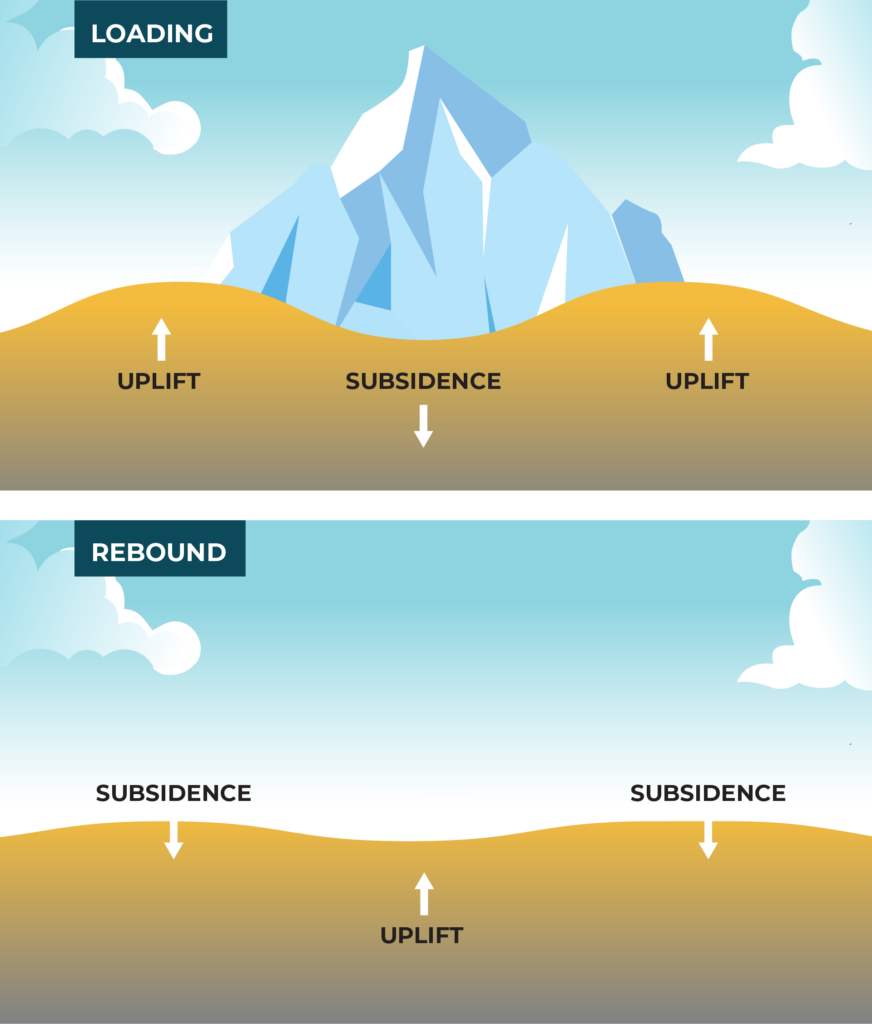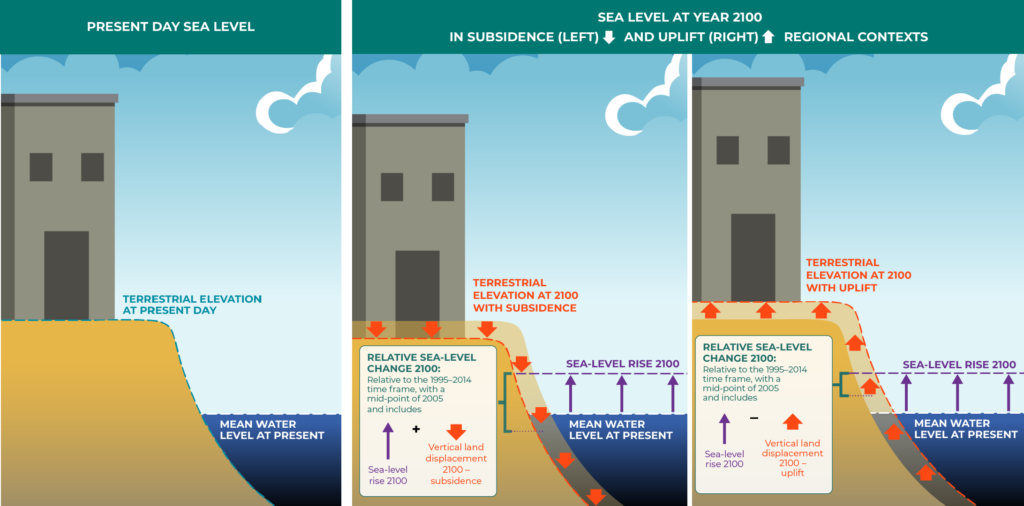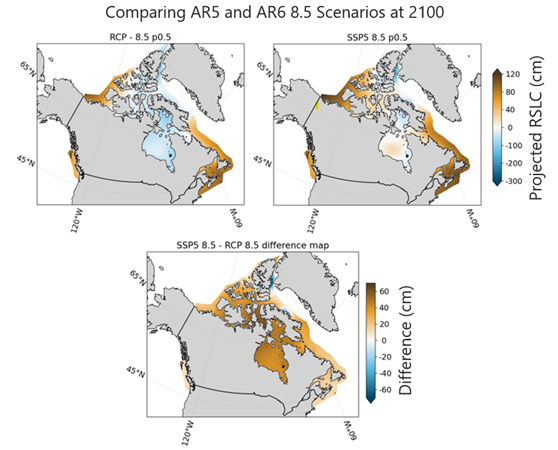Understanding relative sea-level change in Canada
Climate change is driving changes in sea level, presenting adaptation planning challenges for coastal communities in Canada’s coastal regions. Anticipated global sea level rise could surpass one meter by the end of the century1. However local changes in sea level can differ substantially from the projected global average change due to factors like local vertical land motion, namely, subsidence (sinking) and post-glacial rebound (uplift). As a result, high-resolution sea-level projections are important for informing adaptation strategies to increase the resilience of Canada’s diverse coastal environments and ensure the safety of coastal communities.Relative sea-level change is the change in ocean level relative to the land. It includes the effects of global sea-level rise and local vertical land motion. It varies over time and is key to understanding the risks of coastal flooding that could impact local infrastructure, ecosystems, and communities2. Local influences on relative sea-level change include local vertical land motion, oceanographic currents, and gravitational forces3. For this reason, projected relative sea-level change can vary greatly across the country. During the coming century, some places in Canada are projected to experience relative sea-level increases that are higher than the global average, while others may experience decreasing relative sea levels due to upward land motion that is faster than the sea-level rise associated with climate change3.Global sea-level rise
Global sea-level rise is driven by the following interconnected processes collectively:
Thermal expansion of the oceans
Seawater volume expands when it absorbs heat, a process called thermal expansion. Thermal expansion is the main driver of global sea-level rise. As global temperatures increase, seawater volume increases, resulting in rising global sea-levels.
Meltwater from glaciers, ice caps, and ice sheets
Meltwater from glaciers, ice caps, and the Antarctic and Greenland ice sheets contribute to global sea-level rise. As ice masses melt, not only do they release substantial amounts of freshwater into the oceans, but the thinning ice also leads to land uplift. Additionally, as the mass of these ice sheets diminishes, their reduced gravitational pull lowers regional sea levels, adding spatial complexity to sea-level change.
Terrestrial water storage
Changes in terrestrial water storage, including water from rivers, lakes, wetlands, snowpack, permafrost, soil moisture, and human-made reservoirs, influence regional sea-level change. In particular, holding back water (impoundment) with the construction of new dams and groundwater pumping can affect sea-level change.
Vertical land motion
Vertical land motion is the uplift or sinking (subsidence) of the Earth’s surface (Figure 1). In Canada, an important process driving vertical land motion is post-glacial rebound (also known as glacial isostatic adjustment). During the last ice age, which reached its peak about 20,000 years ago, the weight of the ice sheets that covered most of Canada lowered the surface of the Earth under the ice, while regions near the edges of the ice sheets rose. Deep in the Earth, mantle material flowed in response to this surface load. When the glaciers and ice sheets thinned and retreated, the depressed central regions started to rise, while the elevated regions sank. Post-glacial rebound is still taking place, thousands of years after the ice sheets thinned and shrank to the present-day remnant ice caps in the High Arctic.
At shorter time scales, there is also an effect sometimes termed “sea-level fingerprinting”. When glaciers melt and lose mass, an immediate elastic response of the solid Earth causes land uplift under the glacier. A simultaneous decrease in gravitational attraction lowers the surface of the nearby ocean. These effects are incorporated into global models of sea-level change.

Figure 1. These diagrams show the response of the Earth (top – Loading) to the growth of a glacier or ice sheet on the Earth’s surface, and (bottom – Rebound) the response after the load is removed.










